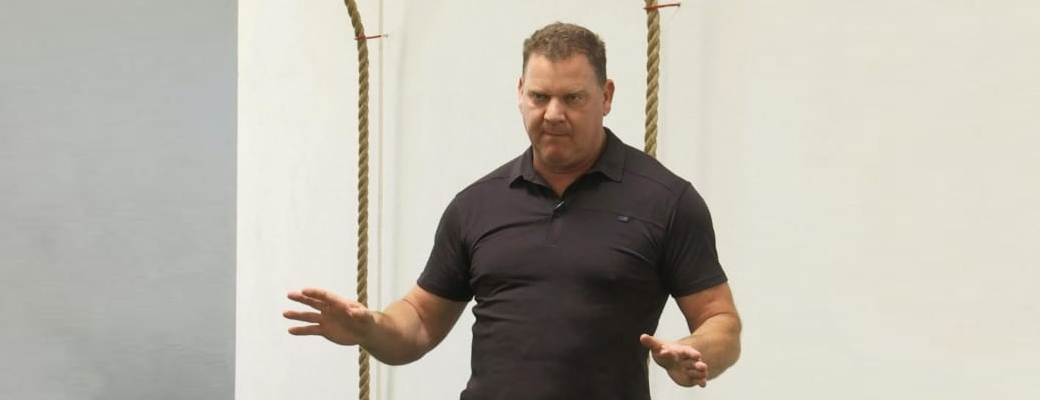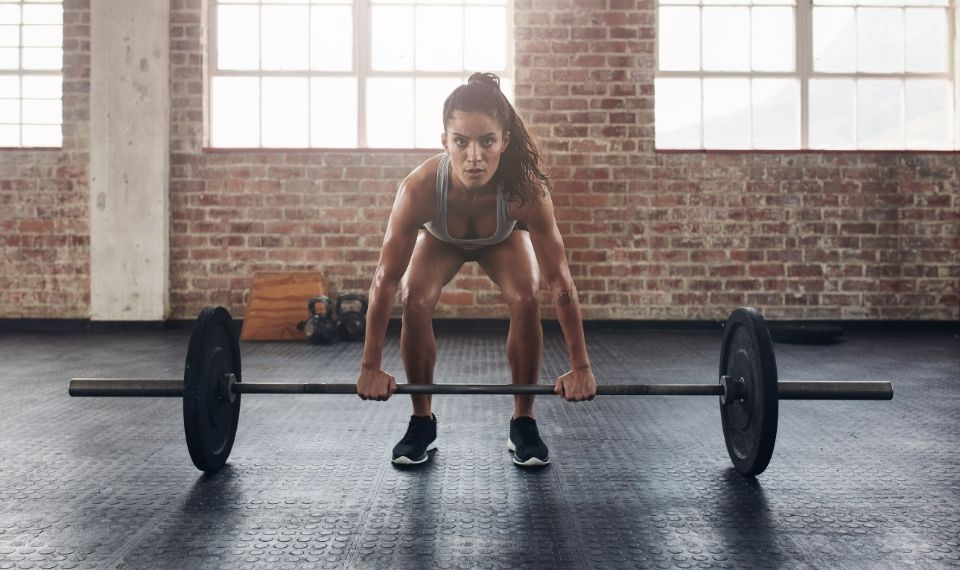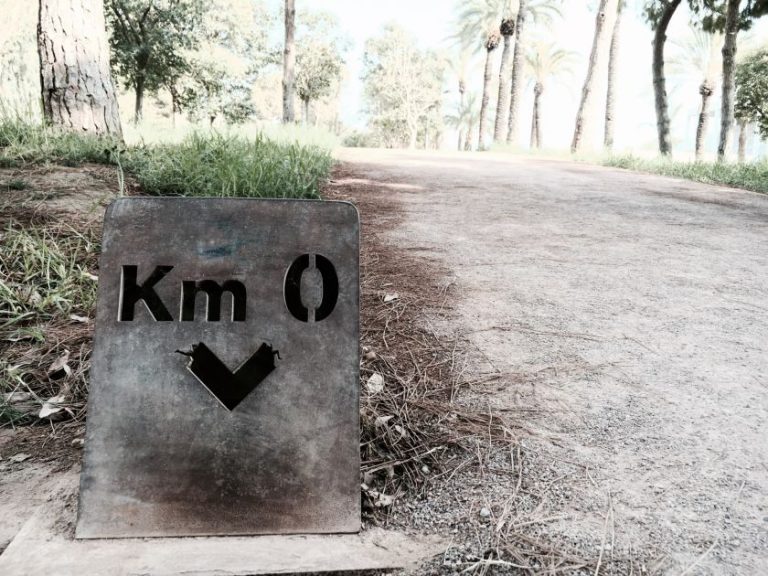Dan John is a legendary old-school trainer, who has trained many notable athletes, written many useful books and, as a young man, set the US record for power pentathlon. In this heartfelt article, the 63-year-old author passes on the accumulated wisdom to the next generation.
I started lifting weights in 1965. I suppose I’m entitled to speculate about junior high and high school, college, Division One and even small fitness stars training as I’ve worked and accumulated experience at all these levels.
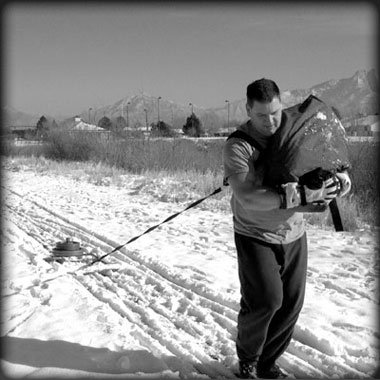
Young Dan John.
But although I’ve trained and studied all my life, there’s one thing it hasn’t prepared me for in any way. What do you do when you turn 59? Or 49? Or 39 – the specific number doesn’t matter. I understand things a lot better now than I did when I was just a youngster, say at 55.
So how should you train as you get older?
I’ll tell you the most banal thing in the world: training should be age-appropriate. We have to work on things that increase both quality and longevity. Both are important.
Dick Notmeyer, my weightlifting coach at Pacifica Barbell Club, once asked me a question. And, as he often did, he didn’t expect an answer at all. He already had an answer of his own.
“What has the most impact on longevity – in percentages?”
And he immediately began to explain that the possibility of living to one hundred years is 50% determined by genetics. Everyone has probably heard of 105-year-olds smoking cigarettes and drinking whisky. Some families simply inherit it. 40% is a way of life, exactly what we ourselves can improve. Or ruin it.
And the other 10% is just luck. If you had walked out a minute later, you could have had an accident or become a millionaire client and won a prize. That’s life. There’s no way to pump up your luck (except for Felix Felicis potion, which Harry Potter used).
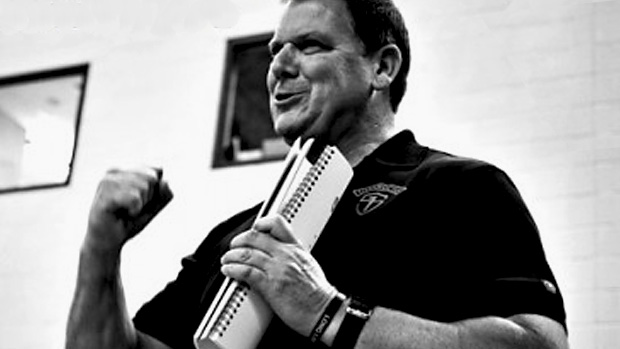
The secret to a long life is “Don’t die”.
A very simple piece of advice that is difficult to understand. If you decipher it, I’ll suggest the following sub-paragraphs:
– Don’t smoke.
– Wear a seatbelt and, when appropriate, wear a helmet.
– Learn how to fall and get up properly.
– Never say, “Hold my beer” (so you can do something retarded).
Since I stopped driving to work, the most dangerous part of my day – statistically speaking – is showering. After 55 it’s not the ice cream that’s more dangerous, it’s the fall.
Of course, if your child gets used to eating pizza and drinking beer in their 20s, it will affect their health in their 50s. But if you’ve somehow made it to 55, now the magic skill of avoiding fractures is far cooler than any superfood or supplement. Not crashing in the shower, walking on ice without a fall, looking both ways twice when crossing the street are healthier than any vitamin.
Bill Gifford, in his book, “You Don’t Have to Grow Old!” writes, “Caloric restriction leads to prolonged life. Intermittent fasting does the same … easier. 100 minutes of exercise a WEEK adds 7 years to your life.”
So… Start fasting (well, under your circumstances). Start walking. He also points out that longevity is promoted by coffee and red wine, as well as a few supplements and a couple of medicines.
As always, the devil is in the details. Talk about the specifics of exercise at different ages.
And here is my basic principle for training: basic human movements performed in the right range of repetitions, in the right number of approaches and with the right load are the basis for maintaining and improving human performance in all areas.
So what are the basic movement patterns?
They are:
– Presses,
– thrusts,
– bends,
– squats,
– weights,
– The sixth is everything else: crawling, tumbling, climbing and anything else that connects you to the “outside world”.
When I train adults, I divide the exercises into three categories:
– Libido,
– Survival,
– Prosperity.
Libido – to look better, feel better (can you guess where that leads?) In the gym it’s hypertrophy exercises, different presses, pull ups, squats that improve your figure and trigger that wonderful hormonal cascade that fills you with energy. And reversing the aging process.
I divide survival into two parts. First, it’s all sorts of blunt life-saving movements, like knowing how to roll, how to fall and get up properly. If, God forbid, you find yourself in an extreme situation, the ability to climb a rope can save you. Or at least hang on it for a while.
Secondly, I suggest learning to do the following (and being able to repeat it for as many years as you can):
stand on one foot for 10 seconds,
– hang on the bar for 30 seconds,
– jump the length of your body (long jump, not high jump!)
– squat, sit for 30 seconds and stand up,
– farmer’s walk with his weight for at least some distance,
– sit (backwards) on the ground and be able to stand up with only one arm (or none!)
Thriving – stooping and different options for carrying weights. Swinging and farmer’s walk work wonders in terms of developing the power and capacity of the whole body. Athletes need them, everyone else could use them too.
Stuart McGill, the Canadian back specialist, described perfectly how elite athletes hit, push or chisel on the ground (or on an opponent): like a hammer!
Swings, weightlifting, deadlifts, jumps and uphill sprints give you just that kind of hammer!
But Stu also reminds you of another key element: the rock!
If something jelly-like remains in any part of your body, energy will leak out in all directions. You need to become a Stone completely! Sometimes I call it an anaconda muscle, it’s what holds the body together, unified.
This kind of Stone is built by carrying heavy sandbags, farm walks, lifting exercises, wide grip deadlifts and something like a bicep lift at the bottom of a cup squat.
What’s so good about the kettlebell swing is that it’s an exercise that combines the Hammer and the Stone!
Suitable training by age groups
Group 1: 16-35 years old – mainly Prosperity.
Survival? Well, you already know: don’t smoke, buckle up, know how to fall properly, don’t do stupid things.
By the way, one of the stupidities is a fixation on “libidinous” movements. Nah, they’re necessary too, but overdoing it leads to what’s called “look like Tarzan, compete like Jane”.
I’d also add that it’s at this age that you should lay the financial groundwork.
Here’s a list from my next book Now what? (Did you notice too, Dan loves lists? Zojnik’s note):
– Avoid credit,
– Build and maintain an emergency fund sufficient to deal with minor problems,
– Set aside a small amount each month,
– Spend on quality goods and services,
– Look after your health by taking proper care of yourself and undergoing regular medical and dental check-ups,
– Choose wisely when it comes to matters of the heart,
– Invest in education and career development (for yourself and your spouse).
In the June/July 2016 issue of Alan Aragon’s newsletter, financial wizard Warren Buffett said the same thing:
– Save enough money for emergencies … and opportunities,
– Buy and save,
– Love the boring (great advice for coaching too!)
– Stick with what you know well (also a base for coaches!)
Group 2. Something is starting to come to you young 35-55 year old devils…
Looked at the frozen ones in the shop and got fat! Yes, lean body mass is starting to shrink, so both professional athletes and home exercisers need to pay more attention to Libido at this age. It’s time for some good old-fashioned bodybuilding. Finally!
Take care of your finances. If still competing, work harder on the Hammer and Stone.
Group 3 (55+), Survival first.
I suggest more exercises where you lie down on the floor and get up, any movements that you do technically, and also – more laughter, reflection and enjoying the camaraderie.
As important as muscularity is for the second age group, it’s now becoming a matter of life and death. Muscle is the source of eternal youth!
Make new acquaintances and strengthen existing relationships. Try new sports and new activities. Try the sport you should have discovered in your youth!
Standards from Paul Lingso
I found some great standards for you in the writings of Paul Lingso (here’s his Facebook profile). The set is very simple, but surprisingly useful.
Norms for men
Squat
1. Practice the correct technique of the cup squat.
2. Cup squat: 24 kg x 10
3. Front squat with two weights: 32 kg x 10
4. Back squat with barbell: own weight
Presses
1 Push-up: 10 reps
2. Kettlebell press: 24 kg x 5 each hand
3. Two-weight press: 32 kg x 5
4. Bench press: Own weight
Bending
1. practising the correct technique of bending (without load, with load)
2. Kettlebell lifts: 24 kg x 20 (also with correct technique)
3. Chest press with two kettlebells: 32 kg x 10
4. Chest raises: Own weight
Pulls
1. “Bat”: 16 kg x 10 (video)
2. Pull-up on low rings or TRX: 20 reps (video)
3. Pull-up on low rings or TRX with legs elevated: 10 reps
4. Pull-up: 5 reps
Standards for women
Squatting
1 Practising the correct squat technique
2. Cup squat: 12 kg x 10
3. Front squat with two weights: 16 kg x 10
4. Back squat with barbell: 60 kg x 5
Presses
1 Push-up: 1 repetition (with perfect technique)
2. Kettlebell press: 10 kg x 5 each hand
3. Two-weight press: 12 kg x 5
4. Double weights press: 16 kg x 5
Bowls
1) Correct technique of bending (with or without load).
2. Kettlebell lifts: 16 kg x 20 kg (also with correct technique)
3. Two kettlebell lifts: 16 kg x 10
4. Weightlifting: 1.5 own weights x 5 (or 60 kg x 5)
Pulls
1. “Bat”: 8 kg x 10 (video)
2. Pull-up on low rings or TRX: 20 reps (video)
3. Pull-up on low rings or TRX with legs elevated: 10 reps
4. Pull-up: 1 repetition
If, for example, you can do one pattern with ease, but the others you can’t, you know what to work on! This is your weakest link and you need to get rid of it. Aim for harmony – go to the same level in all types of movements.
The more the better, but remember that this “more” should be reasonable and healthy, and not put on the operating table.
By the way, I didn’t take this kind of advice myself (Dan went a bit overboard and had hip surgery – translator’s note). Don’t be like me!
You only get one body in this life to use and enjoy. Make it better by moving better and moving more. Some of us simply call it ‘training’.
